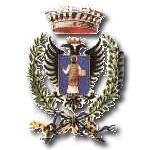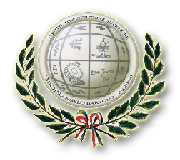
 Translate
Translate
-
* News
- - Agira 2018, 75 years later
- - Agira 2013, 70 years later
- - Gallery of ceremony 2013
- - Operation Husky 2013
- * Students' Contribute
- * About Us
- * Visitor's Book
- * Collaborators
- * Canadian Battles
- * Italian Defensive Positions
- * Allied Forces
- * Historical Movies
- Historical Information
- Historical Maps
- * Bibliography
- Biographies
- * Catania War Cemetery
- * Moro River War Cemetery
- * Syracuse War Cemetery




10 July - 2 September 1943
The Allied invasion of Sicily began with parachute assaults on the night of 9-10 Jul 1943, followed by amphibious landings in several locations on the south coast the next morning. Operation HUSKY was the largest amphibious operation of the Second World War up to that point in time, in terms of troops involved.
| BATTLE OF SICILY | ||
| Location | Fallen in this day | Movie |
| Pachino (assault landing) | July 10 | |
| Ispica/Rosolini (pursuit) | July 11 | |
| Modica (pursuit) | July 12 | |
| Ragusa | July 13 | |
| Grammichele(battle) | July 13-15 | |
| Giarratana (pursuit) | July 13 | |
| Vizzini (pursuit) | July 15 | |
| Caltagirone (pursuit) | July 16 | |
| Piazza Amerina | July 16-17 | |
| Valguarnera (battle) | July 17-19 | |
| Assoro | July 20-22 | |
| Leonforte | July 21-22 | |
| July 23 | ||
| Nissoria (battle) | July 24-25 | |
| Agira (battle) | July 24-28 | |
| Catenanuova | July 29-30 | |
| Adrano | July 29-31 | |
| " " | Aug. 1-7 | |
| Regalbuto (battle) | Aug. 29-31 | |
| " " | Aug. 1-3 | |
| Centuripe | July 31 | |
| Aug. 1-3 | ||
| Pursuit to Messina | Aug. 4-17 | |
| Aug. 17-31 | ||
| Troina Valley | Aug. 2-6 | |
| San Teresa di Riva (embarkation) | Sept 2-3 | |
While the Battle of Sicily achieved the operational goals of evicting Axis forces from the island, criticism at the handling of the battle by senior commanders has suggested that too many Axis troops were allowed to withdrawn in good order across the Straits of Messina to the Italian mainland, particularly high quality German formations such as the Hermann Goering Division.
The battle served as an effective indoctrination for the Canadians involved; Major General Guy Simonds and subordinate commanders received battle experience and by all accounts handled the division well. Canadian soldiers also received accolades from both higher command and their German enemies for their conduct of the battle.
Allied grand strategists had long discussed the options available to them for re-entering the continent of Europe and liberating it from The Axis. The entry of the United States into the war in Dec 1941 gave great impetus to the planning for such a venture. At the time of the Dieppe Raid in Aug 1942, many in the Allied camp were still calling for a direct invasion of France. With considerable forces already engaged in North Africa, Britain and the US expanded their efforts there. Canadian participation had been limited to the attachment of individuals to British units in order to gain battle experience. With the defeat of Axis troops in Tunisia in May 1943, the next phase of Allied strategy had already been determined: an invasion of Sicily.
The decision to attack Italy rather than France has continued to be debated by historians. Equally controversial, then and in ongoing debates since the war, has been the decision to split the forces making up First Canadian Army in the UK. The 1st Canadian Infantry Division and the 1st Canadian Army Tank Brigade were both selected for employment in Operation HUSKY.
US forces landed in the Gulf of Gela with British forces landing on the south-eastern portion of the island. The initial landings of US forces were met with heavy resistance, including a counter-attack by armour of the Hermann Goering division. Strong winds hampered the airborne assault, and when airborne reserves were called in on the second day of the invasion, a costly friendly fire incident saw several transport planes shot down by the Allied fleet in the belief they were German bombers.
The Canadian landings at Pachino were done on a two-brigade front, with spirited resistance offered against only one of the brigades. Many transport vehicles and items of equipment had been lost by the 1st Division when a ship was torpedoed and sunk on the way to Sicily.
Once ashore, there was no master plan to co-ordinate the activities of the US 7th Army and the British 8th Army, and the two formations operated independently during the campaign.
After initial heavy counter-attacks against the Americans, which were repulsed by the use of naval gunfire, resistance stiffened on the British front while US forces broke away from the beachhead. Faced with the formidable obstacle of Mount Etna, the 8th Army commander, General Montgomery, persuaded the 15th Army Group commander, General Alexander, to shift the inter-army boundary and allow room to maneuver to the west. During this operation, the US 45th Infantry Division was forced to break conact with the XIV Panzer Corps, which escaped a likely encirclement.
The 1st Canadian Division - described by Montgomery as "fat" - were given time to rest and acclimate (while most of the 8th Army formations were veterans of the desert, the Canadians had moved to the Mediterranean from Scotland where they underwent amphibious and mountain operations training). Once they were moving, they first saw action at Grammichele and Piazza Armerina.
Other actions to the north included Valguarnera on 17-18 July , the first true divisional operation of the war for Canadian soldiers. The Canadians traded 140 casualties for 500 Germans killed, wounded and captured. The battle saw the first combat use of the Projector, Infantry, Anti-Tank, the first combat shoot of the entire divisional artillery, and the first true combat actions for several battalions such as The Royal Canadian Regiment.he US 7th Army, relieved of the burden of fighting up the centre of the island where the Canadians and British were now employed, pressed to the northwest in an impressive but tactically irrelevant sweep to capture the city of Palermo. Strategically, the capture of Palermo led to a coup that deposed Mussolini, Italy's dictator and war leader.
Both the 7th and 8th Armies now turned to the task of capturing Messina, and heavy resistance was offered both armies. Canadian successes described as "brilliant" took place in the hilly terrain southwest of Mt. Etna from 20-22 Jul, including a surprise night attack by the 1st Brigade at Assoro which was followed by successful defence against persistent counter-attacks, and the capture of Leonforte by the 2nd Brigade.
Operation HARDGATE began on 29-30 Jul, intended to open the way for the British XXX Corps, and aimed at taking Regalbuto, Centuripe and Adrano. Canadian and British units took all these objectives in the first week of Aug, with other actions at Agira on the way.
When Adrano fell to the British 78th Division, the Canadians found themselves "squeezed out" of the line of battle, as US forces in the north and British forces to the east converged and carried on to the northeast to Messina. Only one unit, The Ontario Regiment, saw action after Adrano during the Pursuit to Messina, and the 1st Canadian Division was withdrawn to the centre of the island.
As the Allies raced to Messina, substantial numbers of German troops with their equipment managed to withdraw to the Italian mainland. Some 100,000 men and 10,000 vehicles were so evacuated during the course of the battle.
The battle officially ended on 17 Aug 1943 after Allied troops entered Messina and the last Axis forces on the island surrerendered. In all the Allied campaign had lasted 38 days, in wich the Axis suffered 29,000 killed and wounded and 140,000 (mostly Italians) taken prisoner.
| Allied Casualties | US | British | Canadian |
| Killed | 2,237 | 2,721 | 562 |
| Wounded/Captured | 6,544 | 10,122 | 1,748 |
Canadian troops remained on Sicily in anticipation of the next phase of the Italian Campaign which began with the Landings at Reggio in Sep 1943.
Many historians have questioned the conduct of the Sicilian campaign and wondered if it was worth the costs in blood and tears. Carlo D'Este, the best known American student of the campaign, describes Sicily as a "bitter victory" because much of the German army escaped across the Straits of Messina to fight another day. He also argues that the differences between the British and Americans over strategy were aggravated by national and personality conflicts among the Allied generals that were to influence operations for the rest of the war.
The leading Canadian historian of the campaign, Bill McAndrew, is careful to distinguish between the military achievements of the Canadians who fought so successfully at the section, platoon, company and battalion levels and the higher command. The failure "to prevent, stop or even hinder the German evacuation of the island" was, he writes, "a combined operations debacle." Perhaps so, but the navy and air force both had good reasons for not committing resources to the costly task of closing the straits and the army had quite enough to do overcoming a determined enemy holding such favourable ground. Sicily was the first real test of what Canada's citizen army could accomplish in battle and they passed with highest honours.1
Battle Honours
The following Battle Honours were granted for Canadian units participating in the Battle of Sicily:
-
Sicily, 1943
Landing in Sicily
Grammichele
Piazza Armerina
Valguarnera
Assoro
Leonforte
Agira
Catenanuova
Regalbuto
Centuripe
Adrano
Troina Valley
Pursuit to Messina
Dramatizations and Portrayals
-
Colin McDougall's book Execution, published in 1958, is reported to have been based on his experiences in Sicily and Italy as a PPCLI officer. The novel opens during the Battle of Sicily. The book was later turned into a film called Firing Squad but the location was changed from Sicily and Italy to North-West Europe.
-
The invasion of Sicily was featured in the film Patton (1970), and focused on the "race to Messina."
-
Lone Canuck Publishing released several scenarios for the Advanced Squad Leader game series set in the Sicily Campaign.
-
The computer game Combat Mission: Afrika Korps also focuses on tactical combat in the Mediterranean, including Canadian units in Sicily and Italy.
Bibliography
-
Volume II of the Official History of the Canadian Army in the Second World War by Gerald Nicholson is entitled The Canadians in Italy, 1943-1945 and was first published by the Queen's Printer on 15 Sep 1956 with a second, corrected edition appearing in Feb 1957.
-
Dancocks, Daniel G. D-Day Dodgers: The Canadians in Italy 1943-1945 (McClelland & Stewart Inc., Toronto, ON, 1991) ISBN 0771025440
-
Mitcham, Samuel W. Jr., and Friedrich von Stauffenberg The Battle of Sicily: How the Allies Lost Their Chance for Total Victory (Crown, 1991). ISBN 0517575256
Notes
-
Copp, Terry. "Taking The Rough Land Of Sicily", article in Legion Magazine


